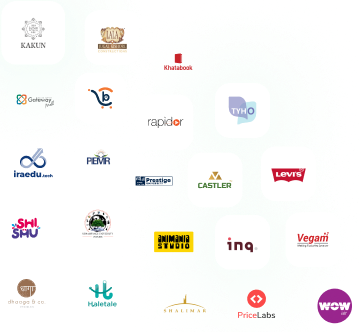How To Write An SEO Optimized
Search engine optimization (SEO) is essential for any website. Google crawlers index websites and rank them based on the quality and relevance of their content. The websites with great content that covers topics, keywords, and phrases users are most likely to search for; get ranked higher in the results. This is where SEO comes in and helps you optimize your website so that it ranks high when people look for relevant keywords and phrases about your business or products online. Search engine optimization is not just about getting more visitors to your site or increasing its visibility in search engine results pages (SERPs). It’s about creating a user experience that encourages visitors to return again and again. Optimizing your site with SEO in mind will also help you avoid being hit by Google’s ever-changing algorithm updates.What You Need To Know About SEO
We’ve all heard it at one point or another: Search engine optimization is the key to driving traffic to your site. But what exactly does that mean? How does it work? And how can you improve your site’s SEO? Simply put, SEO is a marketing technique that helps people find your website by optimizing your content and structure so that it ranks higher in search engine results. There are two major search engines — Google and Bing — and the way you optimize your content for one will impact the other, too. The goal of SEO is to get more people to click on your website in search engine results. But your website isn’t just a one-time visit. You want people to come back again and again. To do this, you’ll want to make sure your site is user-friendly and that it offers valuable and unique content.How to Write SEO Optimized Content
Keywords are crucial when writing SEO content. They are words or phrases people will be searching for when looking for information or products related to your business. The more specific the keywords you use, the more people will find your content in search engines. But it isn’t enough to just throw in a few keywords; you need to weave them into your content naturally. Not only will this help your content rank well in search engines, but it will also increase the number of clicks you receive. It’s important, though, not to go overboard. Using keywords too often can get you penalized by search engines, which will lead to lower rankings.Keywords and keyword research
Keyword research is a vital part of the SEO process. In the absence of sufficient keyword research, you risk writing content that is not targeted enough to gain traction. The problem, though, is that many people still don’t understand how keyword research works. You’ll need to understand how to use certain tools and how to look at the data they provide to get the most out of it. Let’s start with some terminology: The “seed” keyword is the term that you start with as you’re conducting your research. For example, if you’re writing a blog post on fishing, your seed keyword would be “fishing.” The “related terms” are the terms that the tool will suggest as you begin typing in the seed keyword. For example, when you type “fishing” into a keyword research tool, the related terms will be “fishing reel” and “fly fishing.”Meta-data and code optimisation
Meta-data is information and data about your website and its content that is visible to search engines. It’s also visible to your visitors if they click on the “more” button when viewing your site in their browser. So it’s important to include relevant information here, especially if you’re working to build your SEO. Meta-data includes your website title, description, and keywords. It also includes the URL of your pages and links, as well as the images on your site and their alt text. When it comes to keyword density and code optimisation, the recommendation is to keep your keyword density between 2-5%. If you have an over-optimised page, you risk being hit by Google’s algorithm updates.Infographic based content
For many businesses, the best way to get leads and build their brand is through content marketing. This is a strategy that involves creating and promoting valuable, engaging content that solves problems for your target audience. One of the best types of content to create is infographics. These are visual representations of data and statistics that are incredibly easy to understand. An infographic based on your blog post or other content will help you to boost your SEO. It’s also a great way to engage your audience and get them to share your content with their followers and networks.Promoted Content ---Keywords And Meta Data
You can’t just sit around waiting for people to come to your website. If you want more traffic, you’ll have to go to them. You can do this by promoting your content on social media channels, publishing it on other websites, and getting more people to read it. If you want to boost your SEO and make the most out of your content, you’ll need to make sure that you include metadata and keywords in your promotional materials. This will help you to rank higher in search engine results and bring you more traffic. Another way to boost your SEO is to guest post on other websites related to your industry. You can use this opportunity to link back to your blog. This will bring more traffic to your site and get you more subscribers.Content Strategy
Now that you know how to write SEO-optimized content, you need to know how to create a content strategy that will help you to consistently produce new, high-quality content regularly. Otherwise, you’ll quickly find yourself without anything new to publish. The best way to create a content strategy is to map out what types of posts you want to publish and how often you plan to publish them. If you’re just starting and don’t have a very big following yet, you may want to post less often. If you already have a large and engaged following, though, you can post more often.Don’t Forget About User Experience
While it’s essential to make sure that your content is optimized for search engines, it’s also important to keep your audience in mind. You want to create content that provides value to your readers, whether they’re visiting your site organically or clicking on a paid advertisement. If your content doesn’t provide any value for your audience, they won’t share it with their friends and networks. They won’t visit your site regularly. And they certainly won’t purchase from you. That’s why it’s important to keep your readers in mind as you create your posts. Ask yourself whether your content is truly helpful to them. Is it easy to understand? Is it helpful? If not, it’s time to revise and re-write until it is.Conclusion
SEO is an essential part of any digital marketing strategy. However, it’s also a moving target as search engines update their algorithms regularly. To stay ahead of the game, you’ll need to stay on top of these updates and make adjustments to your content. This can be a challenging and time-consuming process. Fortunately, though, many tools and resources can help. If you want to improve your SEO, start by understanding how search engines work. Then, make sure your website is optimized and that your content is engaging and useful. Finally, promote your content and engage with your audience. With these tips, you can improve your SEO and bring more traffic to your website.The world’s First zero commission platform
Hire tech partners effortlessly
 If you're a non-tech founder looking for an agency or a tech founder looking for engineers.
If you're a non-tech founder looking for an agency or a tech founder looking for engineers. You can get your 5 best matches from 2800 in 5 mins, with 1000 data points tracked.
You can get your 5 best matches from 2800 in 5 mins, with 1000 data points tracked. Connect directly with no credit card needed!
Connect directly with no credit card needed!
You’re just a click away from the best talent.


